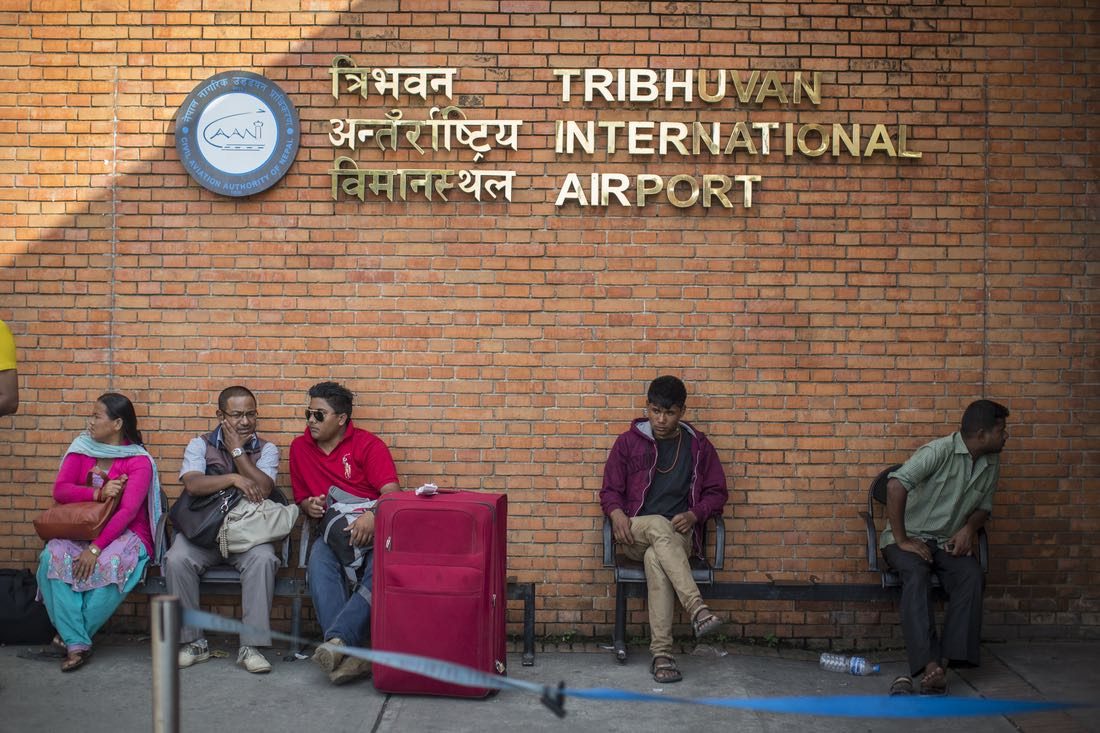June 6, 2018
Like so many citizens in countries facing shrinking economic opportunities at home, many Nepalis have sought employment abroad, and international labor migration has become an accepted avenue for economic growth, both for the individual and for the nation. Nepal’s political and socioeconomic systems are in a period of transition, and the country is recovering from a series of national disasters, adding to the lure of potential foreign jobs. From 2008 to 2017, Nepal issued some 3.5 million labor permits to migrant workers, predominantly for travel to Malaysia and nations of the Gulf Cooperation Council (GCC). In the last fiscal year alone, Nepal received remittances worth NPR 699 billion (USD 6.56 billion) from its citizens employed overseas, more than one-quarter of national GDP, the fourth-highest proportion in the world.
A system in which low-skilled workers must travel abroad to support their families, often with uncertain prospects at their destination, has inherent potential for abuse—from recruitment fraud, to wage theft, to human trafficking. Beginning with the 2013/14 fiscal year, Nepal’s Ministry of Labor, Employment, and Social Security (MoLESS), in collaboration with the International Labor Organization, the International Organization for Migration, and The Asia Foundation, has worked to support evidence-based policymaking and the creation of institutional structures to ensure the safety and security of migrants and their families by documenting national trends in foreign employment. In late April, MoLESS released their third periodic report, Labor Migration for Employment—A Status Report for Nepal: 2015/2016–2016/2017.

Migrant laborers prepare to depart Nepal at Kathmandu’s Tribhuvan International Airport. A large proportion of migrant laborers head to countries in the Arab Gulf including Qatar and Saudi Arabia.
The new report confirms that foreign employment is still the most significant motivation for international migration from Nepal. The Department of Foreign Employment (DoFE) issued 786,564 new permits, for more than 100 destination countries, in the two years studied in the report.
As in other South Asian countries, most labor migrants are male, but men seeking migration permits fell by 5.83 percentage points in 2016/17, continuing an existing trend, while women’s participation grew by 8.8 percentage points. Part of this statistical uptick is explained by the growing number of women joining the formal economic sector in Nepal, as argued in the previous MoLESS report. Female participation may be still higher than these official figures, however, as many women seeking domestic work in the GCC still rely on informal channels to evade Nepal’s ban on such work for women below the age of 24. This exposes them to higher risks of exploitation and undermines their mobility and access to support services, and it prevents women from visiting their families at home, for fear they will be barred from returning to work. Between 2015 and 2017, some 4,832 undocumented female migrant workers applied for formal permits. A call by the government, with assurances of no legal consequences, would encourage undocumented women migrants trapped in Gulf countries to formalize their status.
The new report also brings to light the number and nature of complaints filed by migrants against recruitment agencies and individuals. The most complaints were filed by migrant workers in Malaysia, Qatar, Saudi Arabia, and the UAE, the four top destination countries, but the United States, China, Canada, Russia, and Australia, which receive a small number of Nepali migrants every year, were also among the top ten for complaints. Of the 5,484 complaints registered by the DoFE from 2014 to 2017, the majority sought prosecution of recruitment agencies and agents, reimbursement, and compensation. There are currently 932 recruitment agencies and 733 independent registered agents operating in Nepal. Greater oversight of these agencies and agents is clearly needed. Periodic audits and open publication of findings by an independent third party would help aspiring workers avoid agencies and agents involved in illicit practices.
Destination countries also need to do a better job protecting the rights of migrant workers and preventing employers from flouting the norms of recruitment and employment or procuring migrant workers illegally. Some 227 rescue and repatriation requests were submitted online by migrants and their families in 2016/17. Better coordination between of the Ministry of Foreign Affairs and MoLESS would strengthen Nepal’s foreign missions in destination countries to better protect migrants’ rights and access to justice.
In a country like Nepal, crucially reliant on foreign earnings, a small decline in remittances can severely affect the nation’s economic health. This new status report, based on government data, should help policymakers and government agencies to better identify the challenges and seize the opportunities of labor migration. Better data is needed on the skills and occupations of Nepalese departing for foreign employment in order to match the supply of skills to the demand in destination countries. Better training of migrant workers at home could mean better-paying jobs and safer working conditions abroad, and a more promising future when they return. Domestic investments in productive sectors such as hydropower, health care, and manufacturing; issuing remittance-based bonds to improve liquidity in the market; and using remittances to establish social safety nets such as microinsurance for crops and livestock could improve economic conditions at home. Ultimately, Nepal must look beyond labor migration and craft a robust architecture for sustainable economic development that maximizes the utility of remittances in the present to ultimately become less reliant on them in the future.
Nandita Baruah is The Asia Foundation’s country representative, and Nischala Arjal is a program assistant, in Nepal. They can be reached at nandita.baruah@asiafoundation.org and nischala.arjal@asiafoundation.org, respectively. The views and opinions expressed here are those of the authors and not those of The Asia Foundation.
